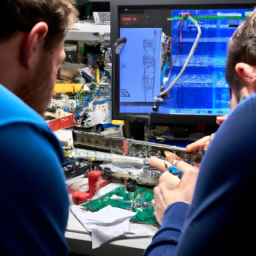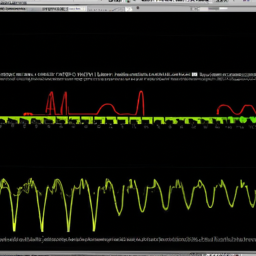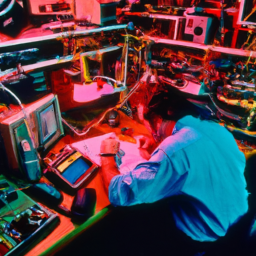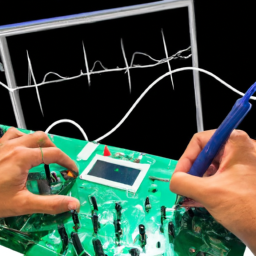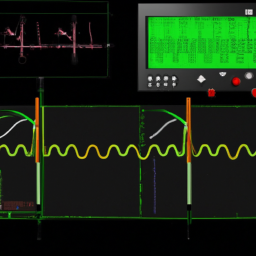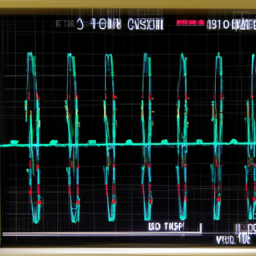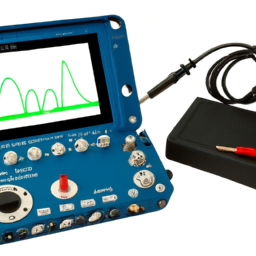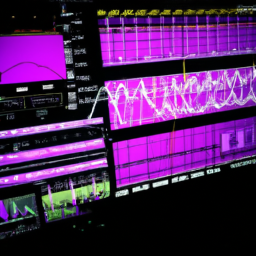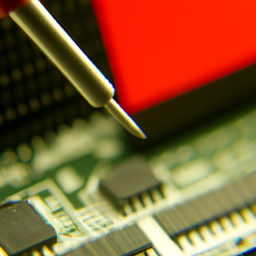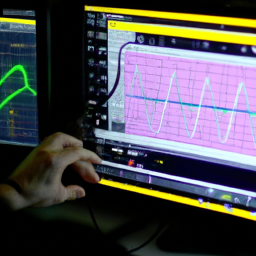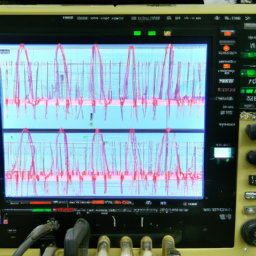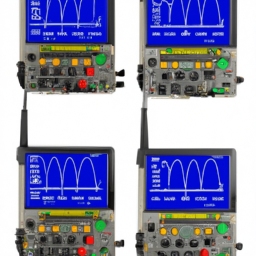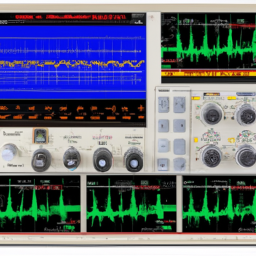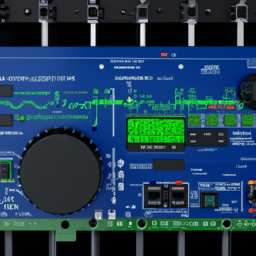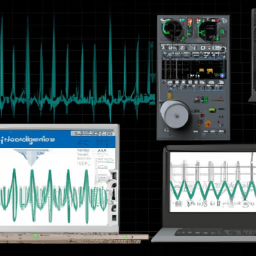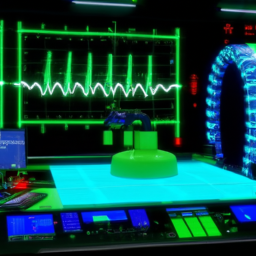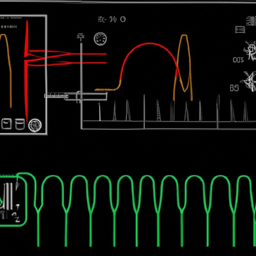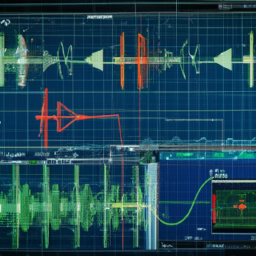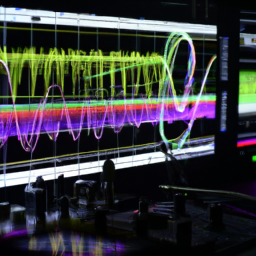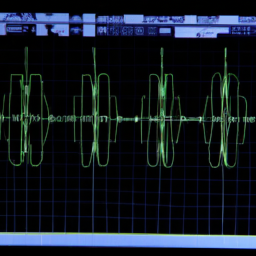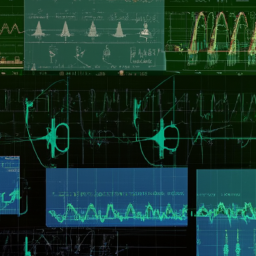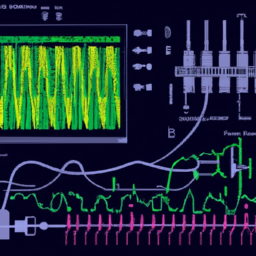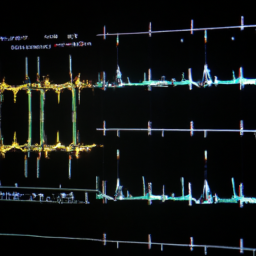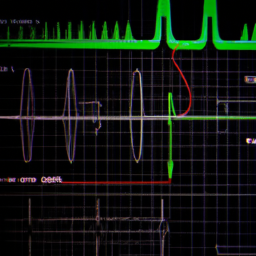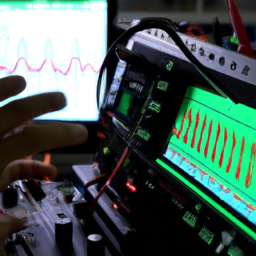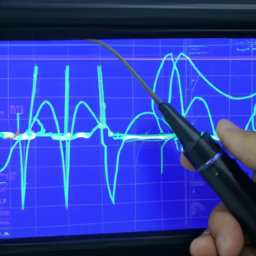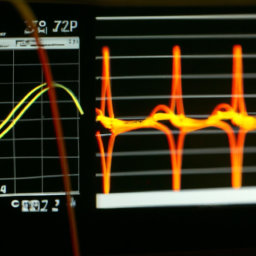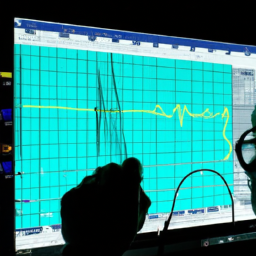In the intricate world of embedded systems, where every intricate circuit and line of code holds the key to success, your trusty oscilloscope becomes your guiding light. But like any great explorer, you need the right tools to navigate through the uncharted territories of debugging.
Fear not, for we have gathered the best oscilloscope accessories to enhance your prowess and uncover hidden glitches with precision and efficiency.
Imagine yourself equipped with logic analyzers, those versatile companions that dive deep into the digital realm, decoding complex signals and uncovering the mysteries of high-speed communication protocols.
Picture waveform generators, your faithful allies in simulating real-world scenarios and testing the resilience of your embedded systems. And don’t forget the indispensable probes and test leads, delivering accurate measurements and ensuring reliable data acquisition.
But wait, there’s more! Current probes to measure elusive currents, differential probes to capture elusive voltage differences, and power supplies to energize your experiments.
With these indispensable tools in your arsenal, you’ll be ready to conquer any debugging challenge that comes your way. So, join us as we delve into the realm of oscilloscope accessories, the secret weapons of every embedded systems engineer.
Key Takeaways
- Probes and test leads are essential for accurate signal measurements
- Grounding techniques are important for maintaining signal integrity
- Different types of probes, such as current probes, isolated probes, high frequency probes, and differential probes, are necessary for various measurement needs
- Oscilloscope accessories like logic analyzers, waveform generators, power supplies, and power analysis tools are crucial for effective debugging and optimization of embedded systems.
Logic Analyzers
If you’re tired of squinting at waveforms on your oscilloscope, it’s time to bring in the big guns – logic analyzers. These accessories are essential for debugging embedded systems. They provide a higher level of visibility into the intricate workings of your hardware.
Logic analyzers allow you to capture and analyze digital signals, giving you a detailed insight into the behavior of your system. With their advanced triggering capabilities, you can easily capture specific events and analyze them in real-time.
Logic analyzers also offer protocol analysis, allowing you to decode and view serial protocols such as I2C, SPI, UART, and CAN. This enables you to troubleshoot communication issues and ensure the proper functioning of your embedded system.
Don’t settle for squinting at waveforms – upgrade to a logic analyzer for a more precise and efficient debugging experience.
Waveform Generators
When it comes to waveform generators, you’ll be fascinated to know that these devices can produce up to 1 million samples per second, allowing for precise signal generation and analysis.
Waveform generators, also known as signal generators or function generators, are essential tools for debugging embedded systems. Here are four key features that make waveform generators invaluable for this purpose:
-
Frequency Range: Waveform generators offer a wide range of frequencies, allowing you to generate signals at different rates and test the response of your embedded system across the entire frequency spectrum.
-
Waveform Types: These devices provide various waveform types, including sine, square, triangle, and sawtooth waves. This versatility enables you to simulate different signal patterns and assess how your system responds to each.
-
Amplitude Control: With waveform generators, you can precisely control the amplitude of the generated signals, allowing you to test the limits and boundaries of your embedded system.
-
Modulation Capabilities: Many waveform generators support modulation techniques like amplitude modulation (AM), frequency modulation (FM), and phase modulation (PM). This functionality enables you to simulate and investigate complex signal scenarios that may occur in your embedded system.
Overall, waveform generators are indispensable tools for debugging embedded systems, providing the ability to generate and analyze signals with precision and flexibility.
Probes and Test Leads
To truly understand and unlock the full potential of your device, you need to equip yourself with the right tools – and that’s where probes and test leads come in.
When it comes to debugging embedded systems, signal integrity is crucial. Probes and test leads play a critical role in ensuring that the signals being measured are accurate and reliable. They allow you to connect your oscilloscope to the device under test, providing a clear and precise representation of the signals.
To maintain signal integrity, it is important to use high-quality probes and test leads that minimize signal distortion and noise. Additionally, grounding techniques are essential in preventing unwanted noise and interference. Proper grounding ensures that the measurements taken are accurate and consistent.
By investing in high-quality probes and test leads and implementing proper grounding techniques, you can effectively debug your embedded system and optimize its performance.
Current Probes
Current probes are an essential tool for measuring electrical currents, with some models capable of measuring currents up to 2000 A, providing accurate and reliable measurements for a wide range of applications.
Isolated probes are particularly useful for measuring currents in high voltage systems, as they provide an additional layer of protection by isolating the oscilloscope from the circuit being tested. This helps prevent any potential damage to the oscilloscope and ensures accurate measurements.
High frequency probes, on the other hand, are designed to accurately measure fast-changing currents, making them ideal for debugging embedded systems that operate at high frequencies. These probes have a wider bandwidth and faster response time, allowing for precise measurements of transient current waveforms.
When selecting current probes for debugging embedded systems, it is important to consider the maximum current rating, bandwidth, and isolation capabilities to ensure accurate and safe measurements.
Differential Probes
If you want accurate and reliable measurements for your electrical circuits, consider using a differential probe. It provides an additional layer of protection and ensures precise measurements. A differential probe is specifically designed to measure the differential voltage between two points in a circuit. It is ideal for debugging embedded systems, as it allows you to measure signals without causing disruptions or loading the circuit. This helps maintain signal integrity and ensures that the measurements are accurate.
By using a differential probe, you can easily observe and analyze the voltage difference between two points. This enables you to troubleshoot and diagnose any issues in your circuit. It is an essential accessory for anyone working with embedded systems and requires precise and reliable measurements.
Power Supplies
In the discussion on Power Supplies, you’ll explore how they provide stable and reliable power to your system. This is crucial for the proper functioning of embedded systems, ensuring that they operate efficiently and without any power-related issues.
Additionally, you’ll learn how power supplies can be used to test and validate power-related issues, enabling you to identify and troubleshoot any potential problems in your embedded system.
Provide stable and reliable power to the system
To ensure a stable and reliable power supply for your system, it’s essential to invest in high-quality oscilloscope accessories. These accessories not only provide the necessary power but also help in debugging embedded systems effectively.
Here are three must-have accessories:
-
Voltage regulators: These devices ensure that the voltage supplied to the system remains constant, preventing any fluctuations that could potentially damage the components. Look for regulators with low output noise and high ripple rejection for accurate measurements.
-
Power distribution units (PDUs): PDUs are crucial for distributing power to multiple devices simultaneously. They provide a centralized power source, ensuring each component receives the required voltage and current. Look for PDUs with individual circuit protection and monitoring capabilities for efficient power management.
-
Isolation transformers: Isolation transformers help in eliminating ground loops and provide electrical isolation between different components. They prevent noise interference and ensure accurate measurements by isolating the system from external disturbances.
Investing in these high-quality oscilloscope accessories will ensure a stable and reliable power supply, allowing you to effectively debug your embedded systems.
Test and validate power-related issues in embedded systems
Ensuring a stable and reliable power supply for your system is like solving a puzzle, with each test and validation bringing us closer to uncovering any power-related issues in our embedded world.
Power analysis is a crucial step in this process, allowing us to understand the voltage regulation and identify any irregularities or fluctuations that may affect the performance of our system. By utilizing oscilloscope accessories specifically designed for power analysis, we can accurately measure the voltage levels, monitor the power consumption, and detect any potential power-related anomalies.
These accessories provide us with valuable insights into the power behavior of our embedded systems, enabling us to make informed decisions and take necessary actions to optimize power efficiency and ensure the stability and reliability of our devices.
Frequently Asked Questions
What are the advantages of using a logic analyzer in combination with an oscilloscope for debugging embedded systems?
When debugging embedded systems, using a logic analyzer in combination with an oscilloscope offers several advantages.
Firstly, a logic analyzer allows you to capture and analyze digital signals, providing insight into the behavior of your digital circuits. It can help you identify timing issues, protocol errors, and signal integrity problems.
Comparatively, a waveform generator is mainly used to generate specific waveforms for testing, but it lacks the ability to capture and analyze signals like a logic analyzer does.
Can a waveform generator be used as a standalone tool for debugging embedded systems, or is it typically used in conjunction with an oscilloscope?
A waveform generator can be used as a standalone tool for debugging embedded systems. It is commonly used to generate test signals for evaluating the behavior of different components and circuits. However, when it comes to the effectiveness of waveform generators versus logic analyzers in debugging embedded systems, logic analyzers have an advantage.
Logic analyzers provide more detailed information about digital signals and can capture and analyze a larger number of channels simultaneously, making them a preferred choice for complex debugging tasks.
Are all probes and test leads compatible with any oscilloscope, or do they need to be specifically matched to the oscilloscope’s specifications?
To answer your current question, not all probes and test leads are compatible with any oscilloscope. It is important to match the specifications of the probe to the oscilloscope.
Active probes offer advantages over passive probes, such as higher bandwidth and input impedance.
Different types of test leads include BNC cables, coaxial cables, and grabber leads, each with their own applications for specific measurement needs.
Ensuring compatibility between the probe and oscilloscope is crucial for accurate and reliable measurements.
How do current probes differ from regular probes, and when are they commonly used for debugging embedded systems?
Current probes differ from regular probes in that they’re specifically designed to measure current flow in a circuit. Unlike regular probes, which measure voltage, current probes can measure both AC and DC current.
They are commonly used for debugging embedded systems when accurate current measurements are required. Current probe applications include power supply analysis, motor control analysis, and measuring current consumption of individual components.
The advantages of current probes include high accuracy, wide frequency range, and the ability to measure both high and low currents.
What are the main differences between differential probes and regular probes, and when is it necessary to use a differential probe for debugging embedded systems?
Differential probes and regular probes have distinct differences in their design and application when debugging embedded systems. Regular probes are commonly used for general signal measurements, while differential probes are specifically designed to measure the voltage difference between two points.
It is necessary to use a differential probe when debugging embedded systems that involve high-speed signals or when there’s a need to measure differential voltages accurately, ensuring precise analysis and troubleshooting.
Conclusion
In conclusion, investing in the best oscilloscope accessories for debugging embedded systems is crucial for accurate and efficient analysis. Logic analyzers, waveform generators, probes and test leads, current probes, differential probes, and power supplies all play a significant role in diagnosing and troubleshooting issues.
While some may argue that these accessories are unnecessary expenses, it’s important to understand that they greatly enhance the capabilities and accuracy of oscilloscopes. This ultimately saves time and effort in the long run. Therefore, embracing these accessories is essential for successful embedded system debugging.


